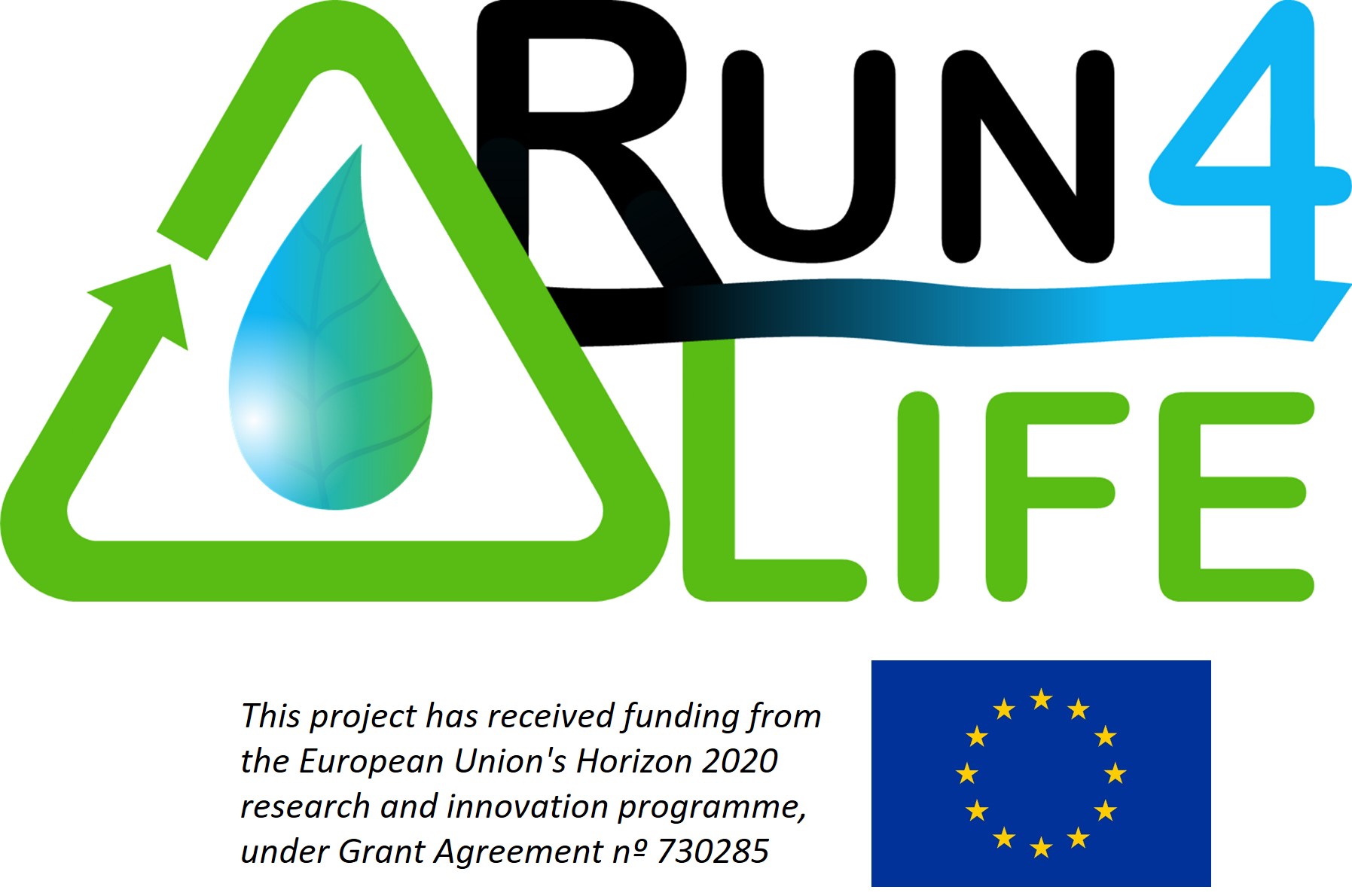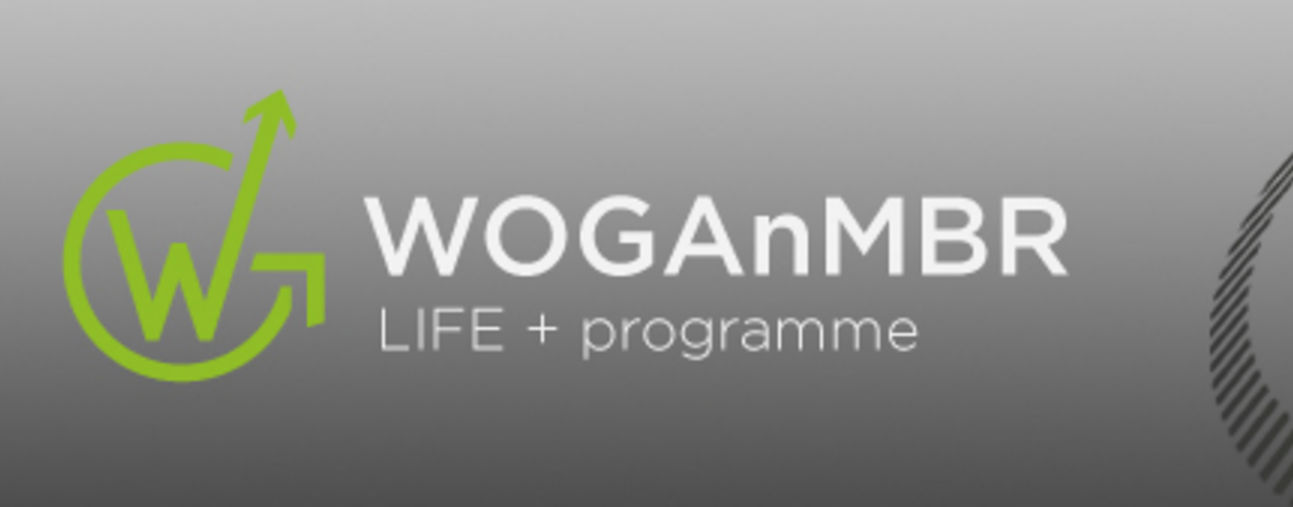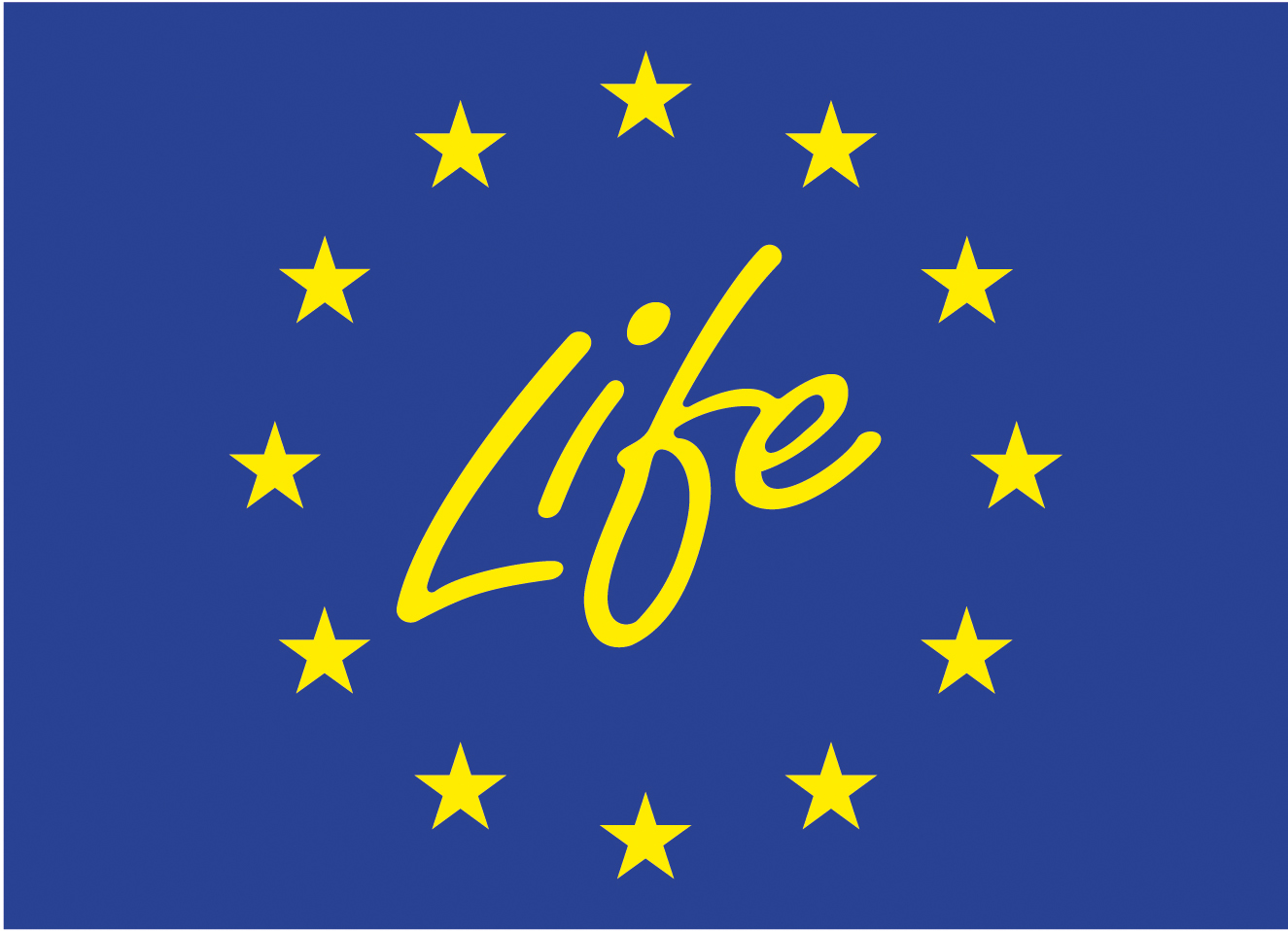-
Life Memory Project
> Communication
> Life Memory Project Communication
>
Networking
Networking
Name

H2020 Run4Life
http://run4life-project.eu/
Partners:
- Aqualia
- DESAH
- Swedish University of Agricultural Sciences
- LeAF
- LEiTaT
- NSVA
- Universidade de Santiago de Compostela - USC
- Water, Environment and Business for Development - WE&B
- Wageningen University & Research
- Consorcio Zona Franca de Vigo
- ecomotive
- isle
- CEIP Clean Energy
- for Farmers, the total feed business
- ASB Greenworld
EU Horizon 2020 Research and Innovation programme, GA no 730285.
Description
The world food supply is entirely dependent on the use of fertilisers. However, the current fertiliser production practices are not sustainable. Phosphate rock is a non-renewable resource, whereas the nitrogen-based fertilisers production is highly energy-intensive, currently relying on the use of fossil fuels. Domestic wastewater is an important nutrient carrier, but currently not exploited as recovery from diluted sewage is not efficient.
Run4Life proposes a radical new technological concept for wastewater treatment and nutrient recovery. It is based on source-separated collection of domestic wastewaters and kitchen waste, with each flow receiving optimal treatment for resource recovery and subsequent safe reuse. Innovative nutrient recovery technologies are integrated with complementary fertiliser concepts to reduce environmental and health risks. The entire nutrient recovery value chain will be demonstrated to the end user.
Concept
For improved resource recovery and reuse, the following innovative technologies will be further developed within the project:
- Ultra low flush vacuum system for toilets
- Separate treatment of black water and organic kitchen waste
- Hyper-thermophilic anaerobic digestion (HTAD) aimed at obtaining safe fertilisers in a one-step treatment
- Ground-breaking nutrient recovery strategies, e.g. bio-electrochemical systems
Nutrient recycling from wastewater opens a new paradigm in society. Therefore active measures such as knowledge brokerage activities will be developed as engagement strategy to advocate the institutional, legal and social acceptance of Run4Life nutrient recovery technologies. Communication and dissemination activities will be focused on different stakeholder levels aiming at the maximisation of market success.
The innovative technological solutions will be demonstrated at four large scale demosites, two of which are to be built during the course of the project. The scheme below gives an overview of the Run4Life technological concept. Different symbols show which techologies are part of which demosite.
Name
Life Methamorphosis
http://www.life-methamorphosis.eu
Partners:
- Aqualia
- Àrea Metropolitana de Barcelona (AMB)
- FCC
- Naturgy
- Generalitat de Catalunya - Institut Calalà d'Energia
- SEAT
LIFE14 CCM/ES/000865
Description
The LIFE Methamorphosis project is cofounded by the European Commission within the LIFE program, which helps developing and implementing new policies regarding environmental protection and climate change by promoting innovative technologies and offering solutions to policy makers. This project is coordinated by Aqualia and has the participation of companies such as Fomento de Construcciones y Contratas (FCC), Naturgy, SEAT, the Barcelona Metropolitan Area (AMB) and the Catalan Institute for Energy (ICAEN).
This is a technology demonstration project with the same goals as the LIFE Programme, in particular climate change mitigation through the use of renewable energy, and more specifically the production of biomethane from waste treatment plants. This fuel has a lower greenhouse effect gas emission rate compared to other fuels. It is a revolution in urban mobility and the development of the cities of the future. Furthermore, this initiative is in line with the guidelines about circular economy promoted by the European Community.
The project wants to demonstrate the feasibility at an industrial scale of two innovative waste treatment systems.
Name
Life STO3RE - Synergic TPAD and O3 process in WWTPs for Resource Efficient waste management.
http://lifesto3re.com/
Partners:
- esamur
- IPROma
- Facsa, ciclo integral del agua
- ainia centro tecnológico
- Consejo Superior de Investigaciones Científicas - CSIC
LIFE14 ENV/ES/000150
Description
LIFE STO3RE is an european project to research, development and innovation, included in the LIFE Programme 2014, with demonstrative character.
LIFE STO3RE is a demonstration project that aims to protect aquatic environment against pollution caused by nitrates diffusion and micropollutants by means of an energetically sustainable joint management of Waste Water Treatment Plants (WWTPs) sludge and manure to obtain a high environmental quality “biofertilizer”.
LIFE STO3RE will implement an innovative and cost effective technology (dual acid-gas temperature phased anaerobic digestion configuration coupled to ozone oxidation and hydrothermal cavitation, CavO3+DAG-TPAD) successfully developed in a R&D project (Sludge4Energy) carried out by FACSA and AINIA and co-funded by the Competitiveness and Economy Ministry of Spain. STO3RE Demonstrative Plant will centralize and treat secondary sludge fromsmall WWTPs and cattle manure from surrounding farms within an extended area.
Name

WOGAnMBR
http://www.life-woganmbr.eu/
Partners:
- CETaqua (Centro Tecnológico del Agua)
- PEPSICO MANUFACTURING A.I.E
- EUROFRITS S.A.
- FIAB (Federación española de industrias de la alimentación y bebidas)
LIFE13 ENV/ES/000779
Description
The main aim of the project is to further develop anaerobic membrane bioreactors (AnMBR), an emerging technology for the sustainable wastewater treatment of the agro-food sector. To achieve this aim, the project will construct an innovative and viable AnMBR wastewater treatment pilot plant that is specially adapted to the agro-food industry sector – i.e. it will offer an improved performance in treating wastewater with a high fat and oil content. This new technology also avoids problems linked to the treatment of wastewater with a high amount of organic matter, such as flotation of suspended biomass and the recollection of the biogas produced in digestion.
The project team expects that this technology will be transferrable to scenarios where conventional anaerobic bioreactors are an inefficient means of treating wastewater. These include cases of excess salinity, large fluctuations in the concentration and composition of wastewater, and wastewater with abnormally high concentrations of nitrogen, among others.
Expected results:
- Construction of a pilot plan with a treatment capacity higher than one cubic metre a day that can be transported and operated in situ on a pre-industrial scale to demonstrate the efficiency and viability of a wastewater treatment system based on AnMBR technology;
- Elimination of chemical reagent in the pre-treatment of wastewater (current standard practice for treating wastewater from a snacks factory is to add 0.5-1 kg coagulant PCBA type, 0.01-0.05 kg floculant poliacrilamide type and 0.1- 0.2 kg NaOH per m3 of treated water);
- Reduction of more than 90% of sludge produced in the physical-chemical pre-treatment of water depending on water characteristics; and
- Use of 100% of the oil and grease from wastewater to produce biogas with a methane concentration of 60-70%. Reduction in respective greenhouse gas emissions of 0.72 – 0.9 kg CO2 per kg of organic matter treated
Name

SIAMEC
http://siamec.preproagbar.es/
Partners:
- HIDROGEA
- Gestión Integral de Aguas de Murcia, S.A.
- ESAMUR(Entidad Regional de Saneamiento y Depuración de Aguas Residuales de la Región de Murcia)
- USC (Universidad de Santiago de Compostela)
- EMUASA (Empresa Municipal de Aguas y Saneamiento de Murcia, S.A)
- CAPSA(CORPORACION ALIMENTARIA PEÑASANTA, S.A)
LIFE14 ENV/ES/000849
Description
The LIFE SIAMEC project will demonstrate the anaerobic treatment of municipal and industrial wastewater at ambient temperature in European climates in order to obtain a technology that consumes less energy, produces less biomass and has a lower integrated footprint for wastewater reclamation. This technology will overcome the main drawbacks associated with anaerobic wastewater treatment at low temperature – namely, greenhouse gas emissions and nitrogen removal – since the dissolved methane present in the effluent is used as a source of carbon for denitrification in both a membrane and a non-membrane based post-treatment.
The project will demonstrate the technical feasibility of applying basic and advanced reclamation processes to the effluents of both prototypes for agricultural, industrial, environmental and urban water re-use while reducing associated costs and environmental impacts in comparison to the conventional wastewater treatment schemes currently applied.
Expected results:
- 50% reduction of the energy consumption in comparison with conventional activated sludge systems;
- 30% reduction of the energy consumption in comparison with conventional systems followed by tertiary treatment (UV) commonly used for municipal wastewater reclamation;
- Recovery of 1-2 Kwh/m3 treated wastewater;
- 50% reduction of sludge production;
- 80% reduction of total nitrogen without external carbon source addition and thus minimal treatment costs;
- 90% reduction of methane emissions associated with anaerobic treatment at ambient temperature;
- Demonstration of the feasibility of a non-membrane based post-treatment for anaerobically treated wastewater at ambient temperature in European climates;
- Verification of biomass retention and nitrogen removal capabilities;
- Establishment of most appropriate treatment scheme to be applied depending on the required water quality;
- Quantification of the economic and environmental benefits of the proposed treatment scheme;
- Identification of the optimal operational strategies and modelling of the process;
- Identification of the main technical and economic motivations and constraints for the implementation of the proposed technology as an upgrading technology for WWTPs in the EU;
- Determination of the potential transferability of the technology to other European regions and/or climate conditions as well as different wastewater profiles. Besides Mediterranean and Atlantic regions, many people live in a geographical area that is under the threat of periods of water scarcity. Moreover, municipal and industrial wastewaters may be different across industrial regions and cities in Europe;
- Collaboration for the achievement of EU challenges in the water sector, through policy making, technical solutions, management of solutions and social responsibility; and
- Fostering water re-use initiatives, through dissemination of results and knowledge transfer to end users identified through the project.
Name

CELSIUS
http://www.lifecelsius.com/
Partners:
- ACCIONA AGUA S.A.
- AGENCIA EFE S.A.
LIFE14 ENV/ES/000203
Description
The CELSIUS project will develop and demonstrate a low energy consumption waste water treatment system for warm climates. The system combines two innovative treatment processes: an anaerobic membrane bioreactor (AnMBR) and partial nitrification/Anammox (anaerobic ammonium oxidation) treatment. The first process removes organic matter, while the second eliminates nitrogen.
The project will assess the effectiveness of a pilot plant that will be suitable for treatment of waste water from warm-climate areas where energy resources are low or access to energy is limited.
The project's specific objectives are: 1. To make organic matter removal more energy efficient through the optimisation of the AnMBR; 2. To make nitrogen removal more energy efficient through the development of advanced control systems and operational strategies for the partial nitrification/Anammox process; 3. To optimise the system as a whole in order to contribute to the removal of organic matter and nitrogen from the waste water; and 4. To evaluate the feasibility of full-scale deployment of the optimised system in warm-climate areas such as South America, India, Africa and EU Mediterranean basin countries (Spain, Portugal, Italy and Greece).
Expected results:
- A 60% reduction in the energy consumed in the organic matter removal process, compared to conventional treatment;
- A 60% reduction in the energy consumed for nitrogen removal, compared to conventional treatment. This would also result in lower greenhouse gas emissions from lower energy consumption. The carbon dioxide saving is estimated to be 0.163 kg/CO2 per cubic metre of treated waste water;
- Elimination of 90% of the organic matter and 90% of the nitrogen from incoming waste water, resulting in a significant impact in terms of prevention of eutrophication and hypoxia in the areas where the treatment system is implemented; and
- A full technical evaluation of the system will be carried out, and an economic analysis will be done taking into account the capital and operational costs of the technology. Following on from this, a list of locations where the system could be implemented successfully will be produced.
Name
OptiAnMB
Partners:
- ACCIONA AGUA S.A.
- Centro tecnólogico de la Energía y Medio Ambiente (CETENMA)
- Entidad de saneamiento y Depuración de Aguas Residuales de la Región de Murcia (ESAMUR)
RTC-2014-2858-5
Description
With the development of the project OptiAnMBR is sought and test in real conditions and on an industrial scale, a technology based on anaerobic membrane bioreactors (AnMBR) for the treatment of urban waste water (ARU). This technology will allow reuse of the treated water, while sludge production minimize excessively and reduce energy consumption in order to obtain a more environmentally sustainable process.
XXI century: From wastewater to Resource Source
Towards a new paradigm based on sustainability, where wastewater now turns into a source of energy, nutrients and simultaneously, a water resource suitable for reuse.
In this context, LIFE MEMORY project targets for the sustainable production of reusable water demonstrating the feasibility of an innovative technology: the Submerged Anaerobic Membrane Bioreactor (SAnMBR).




